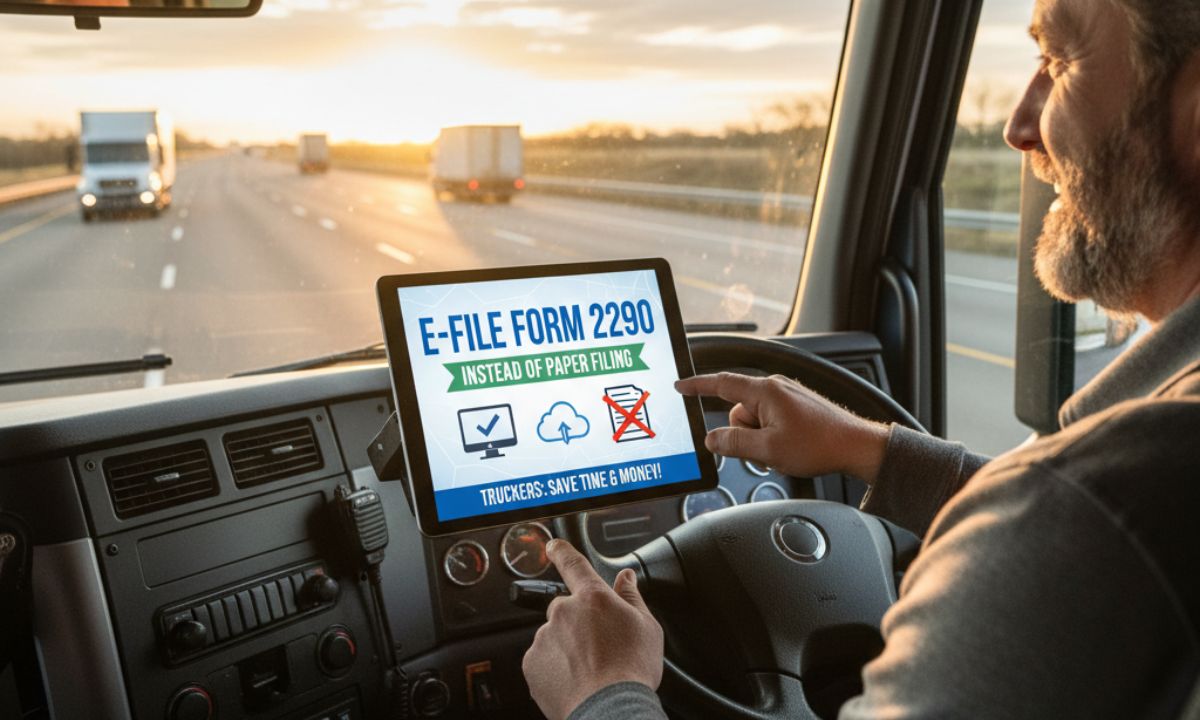Why E-File Form 2290 Instead of Paper Filing?
What are the reasons for e-filing Form 2290 instead of paper filing?
The actual method might include traditional paper filing or IRS-approved electronic filing (more commonly referred to as e-filing) for filing Heavy Vehicle Use Tax (HVUT) Form 2290. Conventional paper filing carries the same weight under the IRS system as electronic filing; however, the latter has been touted as the most beneficial method of filing because of its rapid disposition, correctness, and compliance advantages.
Quick Processing and Instant IRS Stamped Schedule 1
Fast turnaround is one of the most distinguishing features of submitting Form 2290 electronically. Evidence of the tax payment may be delayed by the processing time-from several weeks-to prove payment. Using this e-filing, the IRS could be stamped the Schedule 1 issued to drivers and fleet operators almost immediately, generally within minutes. This Schedule 1 becomes a very important document while registering vehicles, renewing plates, and even going through roadside inspections.
Reduced Errors and Automatic Accuracy Checks
The problem with paper filing is that it does not catch a few mistakes in the filing process-such as a lost signature, a wrong VIN, or an addition error. Such errors result in rejection, penalties, and waste of time. In contrast, e-file platforms now have built-in error checks, a correction of VINs, and automated tax calculations. This is where errors are based, thus making it minimize IRS rejection, eliminating costly mistakes.
Convenience and Access Anytime From Anywhere
No more paper-posting or queuing for entry at the IRS. Truck drivers spend a great time on the road, but they should file Form 2290 anytime, anywhere, thanks to computer, tablet, or even smartphone. Making filing platforms accessible 24/7 makes it much easier to be compliant without having to change travel schedules.
Secure Data Transmission and IRS Compliance.
When it comes to taxes, security is perhaps the most pressing concern while handling the documents. IRS-authorized e-file providers encrypt their data transmissions using secure authentication-another level of protection for that sensitive information. Unlike mailing paper documents that can go missing or delayed, e-filing guarantees the safe and immediate submission of documents directly to the IRS; thus, fleet owners can have peace of mind.
Simplified Recordkeeping and Digital Storage
Paper copies can fall out of sight, become damaged, or even go away altogether. Form 2290 and Schedule 1 can now be obtained electronically and stored, accessed, and shared any time between the audit, renewal, and compliance checks, all while keeping everything organized and paper-free.
Cost-Effectiveness and Time Saving
E-filing might conjure odd numbers in one’s mind, prompting many to think it is quite expensive. Except for late penalty charges, the risk of rejection is reduced, and less administrative spending, making e-filing cost-efficient. Bulk e-filing does not worsen the case for trucking businesses with many vehicles.
IRS Mandate for Large Fleets
There is mandatory e-filing for businesses reporting 25 or more vehicles to the IRS. Thus, for very large fleets, electronic filing is the only option available for compliance. Hence, even small-scale operators stand to benefit, especially if they learn to do electronic filing early on.
Conclusion
It is more than convenience to accept e-filing for Form 2290, as people are now looking for compliance, efficiency, and business success in the long term. E-filing has now been considered the gold standard for truckers as well as fleet managers with faster approvals, reduced errors, more safety, and easy recordkeeping. By adopting e-filing, trucking companies will spend less time concentrating on delays caused by paperwork and more time focusing on the road ahead.
Disclaimer: The information provided in this blog post is for general informational purposes only. While we strive to keep the content accurate and up to date, we do not guarantee its completeness, reliability, or accuracy. Any actions you take based on this information are strictly at your own risk. We are not responsible for any losses, damages, or inconveniences that may arise from the use of this blog.












